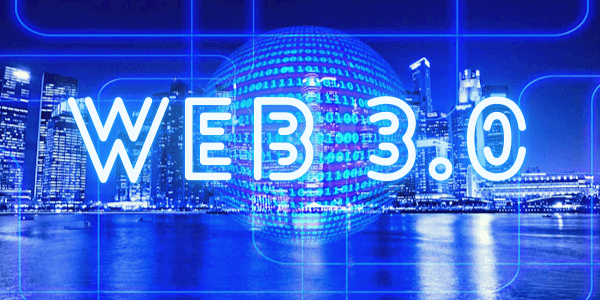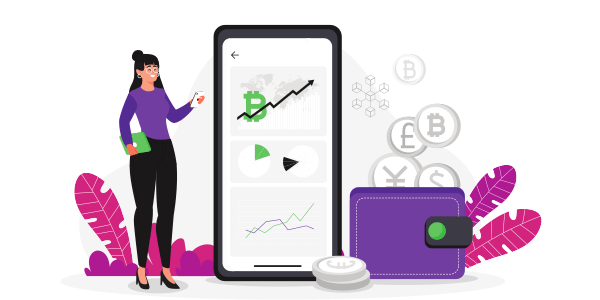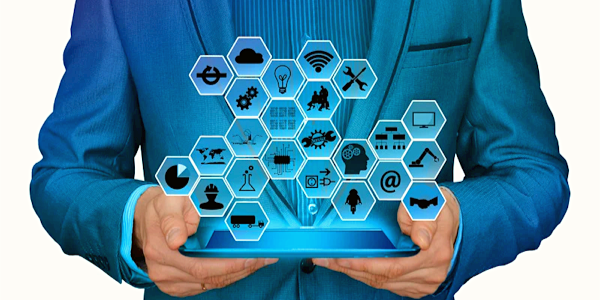Web3, also called Web 3.0, is a concept for a new version of the World Wide Web built on blockchain technology and includes decentralization and a token-based economy. This topic is likely to be asked as current events or science and technology questions in UPSC. Therefore let’s get started with the meaning of Web3 or Web 3.0, the evolution of the web, the main characteristics, and the relationship with crypto.
What is Web3 or Web 3.0?
Web 3.0 is the internet’s next generation. In which apps and websites will be able to manage data in a sophisticated human-like manner using technologies like machine learning (ML), decentralized ledger technology (DLT), and Big data. Web 3.0, termed the Semantic Web by Tim Berners-Lee, the creator of the World Wide Web, aims to make the internet more autonomous, smart, and open. Web3 concepts differ, but they all revolve around decentralization and typically include blockchain technology like crypto currencies and non-fungible tokens NFTs.
Artificial intelligence (Al), the Internet of Things (IoT), and blockchain technology are the three pillars of Web 3.0. Blockchain will aid in the decentralization of data storage while also fostering trust in the virtual world. Al will assist in decoding and filtering online data and providing consumers with the most relevant options.
LoT will assist the Web 3.0 interoperability layer in connecting the internet to smart devices. It was intended to give users a more relevant and better internet experience by continuously evaluating their digital footprints. Users will own platforms and applications in Web3, as opposed to now, when tech giants control platforms.
Now that you understand the meaning of Web 3.0 let’s speak about the benefits and drawbacks of Web 3.0, its relationship with crypto currency, India’s role, and other specifics. Before you go, don’t forget to look at other UPSC key topics for your preparation. Click here for more information.

The Web’s Evolution
Web 3.0 is a huge upgrade from its previous generation, web 1.0 and 2.0. The tools and techniques that are used at different times as the web evolves determine how it evolves and how it differs from its various versions.
- Web 1.0 (1989-2005)- The Static Web, often known as Web 1.0. It was the original form of the internet that we now use. It provided restricted information availability and little or no opportunity for user participation. Because this version lacked algorithms for searching through internet sites, people had a difficult time finding useful information. A small group of people was in charge of content generation. It made information more accessible to everyone. On the other hand, the data or content was held by the firms that hosted the online pages.
- Web 2.0 (2005)- Thanks to developments in online technologies like Javascript, HTML5, CSS3, and others, the Social Web, or Web 2.0, made the internet a lot more dynamic, allowing companies to build interactive web platforms like YouTube, Facebook, Wikipedia, and many more. It improves the sharing of information, cooperation, communication, and interoperability. Data is controlled by organizations that host applications or cloud service providers in this version. It made content creation more accessible to everyone.
- Web3- Web 3.0 is the next step in the evolution of the internet. It allows the processing of information with near-human intelligence by deploying AI systems that can run clever programs to aid users. Systems, people, and home devices will automatically interact on the Semantic web. There will be no one who owns the data or the content in this edition. It entails democratizing action and cognitive capacities.

Advantages and Disadvantages of the Web3
Advantages:
- Web3 will aid in the solution of some of the significant concerns that plagued prior versions, including privacy and plagiarism.
- It will enable more information to be linked together.
- It will make online browsing easier by making it more precise and efficient.
- Web 3.0 will entail more effective and efficient communication, making knowledge sharing easier.
- It will alter how people connect with the internet and collaborate.
- As It will limit data extraction by global social media players who collect data without authorization and engage in exploitative advertising and marketing activities because it will include data decentralization.
Disadvantages:
- Web 3.0 will be inaccessible to devices or gadgets that aren’t very advanced.
- When individuals become accustomed to using Web 3.0, older versions of the web may appear obsolete.
- Data decentralization will result in a lack of central control, making it difficult for regulators and law enforcement to oversee cybercrime, hate speech, and misinformation.
- Web 3.0 will be difficult to grasp for newbies.
Web3 Relation with Crypto and Blockchain
Since Web 3.0 networks will run on decentralized protocols — the building blocks of blockchain & crypto currency technology — we can expect a strong convergence and symbiotic interaction between these three technologies and other disciplines. They will be interoperable, seamlessly integrated, automated by smart contracts, and used to power everything from microtransactions in Africa to censorship-resistant P2P data file storage and sharing through applications like Filecoin, to entirely transforming how businesses conduct and operate. The present flurry of Defi protocols is only the beginning.
Gavin Wood, the founder of Ethereum, a blockchain technology startup, invented the term Web3 in 2014, and many others have since added to it. Therefore More talks took place on Web 3.0 in 2021 due to the rise of crypto currency.
Peer-to-peer transactions and blockchains have been identified as significant ideas in Web3.
Decentralized Autonomous Organization is the guiding principle of Web3 (DAO). The business rules controlling each transaction are publicly available for anybody to view, and software will be created in accordance with these standards.
Cryptocurrency and blockchain are examples of technology that follow the DAO idea.
There is no requirement for a central authority to authenticate or validate with DAO.

Web3 and India
- As a result of China’s exit from the crypto space, India now possesses the world’s largest digital population. Millions more Indians will be online during the next decade, and India will experience trade worth trillions of dollars through digital channels.
- Because of the country’s size, any new paradigm may be pushed into widespread adoption.
- As the ‘web3 operating system’ comes to life, all of this represents a huge opportunity for India to take its software sector to new heights.
- New business models and decentralized apps will emerge in India over the next few years. India has a strong digital infrastructure framework in place as well as a thriving financial sector, all of which will aid in reaping the benefits of Web 3.0.
- Many firms have also stated that they will invest in Indian start-ups working in the fields of blockchain and Web 3.0.
- However, proper regulatory and legal frameworks will determine how far Web 3.0 succeeds in India.
Web 3.0- Wayforward
- The current front-end, middle-layer, and back-end architectures will need to be changed for Web3.
- Backend methods for handling the blockchain, keeping and indexing data in the blockchain, and so on will be required by Web3’s architecture.
- In order to work successfully, the middle layer, known as the business rules layer, will also need to accommodate blockchain-based backends.
- Web3 may or may not become the dominant style of internet administration, but it raises critical problems.
Conclusion- Web3
In conclusion, This essay will explain Web3, the meaning of Web 3.0, Web evolution, Web 3.0, and crypto. This is a vital article for your UPSC. Visit the official website for UPSC exam date updates and other news. We hope you found the information in this post helpful. Every year, lakhs of candidates sit for the UPSC IAS test. The only way for applicants to pass is through careful preparation and commitment.

FAQ- Web3
A blockchain is a network of interconnected data storage blocks. The type of blockchain determines the data that is contained within a block. A Bitcoin Block, for example, comprises information on the sender, receiver, and the number of bitcoins to be sent. The Genesis block is the first link in the chain. The blockchain’s objective is to distribute information across all parties who have access to it through an application. In terms of reading and writing, access to this ledger can be either unlimited (‘permissionless’) or controlled (‘permission’). Web3 is the internet’s third generation, and it will be built on the blockchain. It will be decentralized, which means it will not be controlled by centralized corporations such as Facebook or Google.
A crypto currency is a decentralized digital currency that does not rely on a bank or other central authority to validate transactions. As a result, no single central body has complete control over a bitcoin network, making regulation and monitoring impossible. Instead, Any cryptocurrency is built on top of a decentralized program that employs blockchain technology to maintain a public ledger that each network node duplicates. This method gives the ledger the advantage of being tamper-proof, making the entire system impenetrable to change.
The meaning of web 3.0: Web 3.0, often known as the third-generation internet, is the World Wide Web’s next iteration. Also, It offers a data-driven Semantic Web that employs machine-based data interpretation with the goal of producing a more intelligent and connected web experience for users.
Editor’s Note | Web3
In conclusion, this article discusses Web3. After reading this essay, you will have a better understanding of what web3 or Web 3.0 meaning is, the evolution of the web, and the relationship between crypto and blockchain technology, among other things. We hope you found this article interesting & that it will help you prepare for the UPSC. Last but not least, believe in yourself and all the best.







